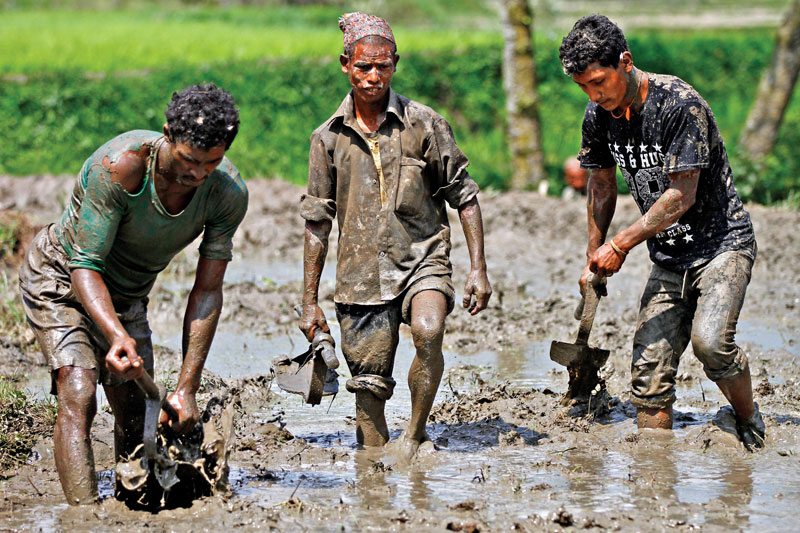Rainy season woes
Kathmandu
As stagnant water is a breeding place for various microbes, there are high chances that one suffers from varieties of skin problems in this rainy season. Not only muddy puddles but also the conditions of the roads in the Valley are in such a dire state that despite our great efforts we cannot escape from getting skin infections.
Fungal infections
Fungal infection is one of the common skin infections people suffer from after getting wet. “Fungal growth can be seen in folded parts of body such as armpits, abdominal folds, in between breasts, thighs, finger webs of both hands and feet,” informed Dr Eliz Aryal Rajouria, Consultant Dermatologist at Kathmandu Medical College and Teaching Hospital, Sinamangal. When the skin is soaked for long hours, skin is macerated, it softens and fungal infection becomes common. This is the reason for fungal growth in those who often work under the rain. “People working in fields are more prone to such fungal infection,” informed Dr Rajouria.
When there is fungal infection there is itching on skin. Inflammable blisters appear on skin. Cracks and woes in skin are common. These blisters can rupture and can lead to ulcers. It can be more painful and can lead to secondary infection if it is not treated on time. Bacteria present in muddy water and rainfall can lead to infection of skin. Roughness in skin is common during the rainy season. “When one starts scratching, the infection keeps increasing. This is why timely treatment is necessary,” advised the doctor.
Common problems
Children often love playing in water and due to aforementioned reason they often become infected. Appearance of reddened bumps on the skin and swelling is visible. Size of the bump starts to increase. The head of the bump later on is filled with pus. Spontaneous oozing of the pus from the bump can be visible when there is boil in skin. Such boils are painful and can heal with scar formation.
Some of us feel
irritation in spaces between the toes. It is commonly known as panile khayeko in Nepali and often is seen in those who work in muddy fields. Whitish skin is seen in the space between the toes and fingers. There is irritation and reddishness too. It is due to fungal and bacterial infection. When the body is wet, water is deposited on the webs and as it is not properly cleaned the skin becomes prone to infection.
“One must wipe the spaces between fingers and toes with soft cotton or tissue to get rid of it,” suggested the doctor. Bathing regularly and washing your toes and hands with skin soap is necessary to get rid of such infections. Bumps also can be visible in the rainy season. It is itchy and as one scratches it there is bleeding from the bumps. It can lead to secondary infections. “These bumps will be more painful and the watery liquid from it will ooze. If left untreated it can spread in other skin areas and can become worse. There will be pigmentation then,” added the doctor.
Cow dung, human waste, different chemicals, decayed plants and leaves are present in mud and this can lead to allergies. Rashes and blisters are common. If there are wounds or cracks on the skin there will be more infection. Hookworm too can penetrate through skin. This is why people must wear proper shoes while walking or working in mud, fields, and muddy roads.
Warts are also common during the rainy season. There is a skin coloured growth on the skin and it gets transferred easily from one person to another. It gets transmitted in one’s own skin too. This is why one must not share his/her shoes, socks with others. If it is in the pressure area like soles of feet then it will be more painful.
• Use lotion, moisturising cream, sunscreen on your skin
• Cut your nails
• Eat healthy food
• Use gumboots and gloves while working on fields
• Do not share your shoes, socks with anyone. Clean and wear them
• Wash your hands and feet with skin soap
• Visit dermatologist immediately if there are skin infections
• Use antifungal dusting powder to get rid of smelly shoes and feet
• Use an umbrella






